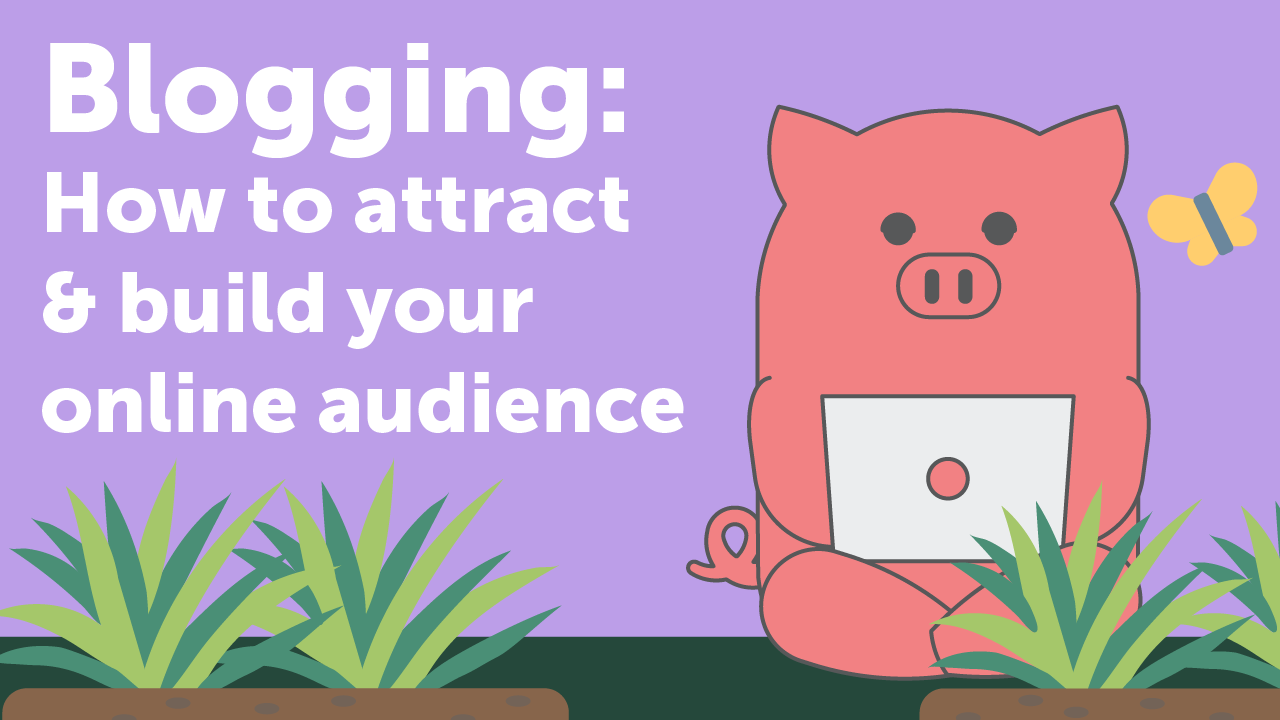Guest Post
From our partners at GoDaddy Registry
Ready to build a blog of your very own? All you need is a ton of passion, and a little discipline to write about that passion.
There are roughly 600 million blogs that are live on the Internet, according to Oblero. This number should not discourage you. Instead it should encourage you to start blogging ASAP, as it shows that the online community is alive, well, and thriving.
Pick your beat
Whether you’re running a blog for your small business or a more personal, hobby-driven blog that you write for fun, you can easily find an online audience just by following a couple key strategies.
To start, define your target audience and the purpose of your blog. For example:
Target audience: Girls and parents of girls, ages 3-16
Purpose of blog: Teaching parents and female youth the therapeutic and empowering art of gardening.
Then think of a working title and tagline for your blog website. Take your time and be creative.
Blog website title: Gardening Girls
Blogging tagline: Gardening for a greener tomorrow.
This simple exercise will help you find your blogging beat.
Need some inspiration for your website URL? Check out some great options here and get inspired!
Find your voice
It’s not just what you say, it’s how you say it that also matters. In addition to defining your blog’s purpose, you have to develop the right tone and voice to match it. Build a blog that’s on-brand with your mission and goals. For example, is your voice educational or inspirational? Is it serious and newsy? The Gardening Girls example may strive to be a little of both.
For a more serious voice, look to plasticscore.co, an environmentally-conscious brand publishing educational content on how to reduce your environmental footprint. Or take annwood.design, a designer’s portfolio site producing conversational content on how design can be used as a storytelling tool. It’s crucial to define the tone of your blog so your readers know what to expect. It also allows you to tailor your content to a more specific audience and recruit new readers with similar interests.
Be prolific
Let’s be real: one blog a month just isn’t going to cut it. Start by creating a robust content calendar that ensures a healthy flow of content each week (and stick to it!)
Data from HubSpot says businesses that publish 16 or more posts per month receive three times more traffic than those who publish fewer than four per month. We get it, 16 can be a lot when you’re first starting out. Strive for one per week at first and build on what you can.
Be consistent
Write often and on schedule to engage your audience. It’s wonderful to publish several times per month, but it’s great to publish on the same days each week so that your audience will know when to tune in. Give them a time and reason to log on to your website.
Say yes to SEO
In order to succeed online, bloggers need to prioritize Search Engine Optimization (SEO). Don’t let the web jargon scare you. This basically means writing web content with keywords that will help potential customers find your website. Words related to your product or service should appear on the homepage, URL, product headlines, and descriptions. For example…
Headline:
Start an Herb Garden in Your Backyard
Story introduction:
Do you wish to grow fresh herbs — like parsley, basil, dill and cilantro — right at home? You can grow these delicious plants by creating a backyard herb garden, then add them to your home cooked meals.
The related keywords should be prominent in your post, but don’t go overboard and use the same few words too many times in one paragraph. Remember that you want to have an authentic and natural voice. Plus, Google can detect when websites are guilty of keyword-stuffing.
Share via social media
You’ve written the content, used the appropriate keywords, and published it to your blog. Now what? Share your amazing posts through social media. Develop a social media strategy to add an extra layer of life and personality to your blog platform. Use your social media posts and updates to communicate directly with potential followers. According to Statista, 97% of bloggers promote their blogs via social media.
Start by identifying the best platforms for your content. Are you a professional recruiter with your own human resources blog? You’ll probably find your community on LinkedIn. Or do you run a travel blog like gotravel.us? Instagram may be the best place to share scenic photography.
Just like your blog content calendar, create a social media content calendar to ensure you’re posting consistently and often enough. Use hashtags to find other social media users who share your interest. (For example, #GirlsGardening or #GardeningForGirls)
Spread the word with a newsletter
Did you know that 66% of bloggers use email marketing to direct people toward their content? Go the extra mile by building a list of contacts who will subscribe to your newsletters. How do you build this list of contacts? You can ask social media followers and website visitors to sign up online. If you ever attend a related event, such as a pop-up shop or conference, you can collect people’s email addresses with a signup book. Each newsletter can showcase your latest blog posts, company-related news (e.g., new hires, product or service launches), and anything else relevant to your industry.
There’s no one direct path to growth, but you do have to commit to a schedule and strategy in order to build a vibrant online community for your blog.
Top it off with a descriptive web domain
You’ve built your blog and packed it with killer keywords to gain more organic traffic, and you set up your toolkit with ways to start marketing — but have you thought about your website name? Let’s face it, a lot of the best names have been taken, so finding a unique URL that’s short and memorable can be hard to come across. Fortunately, there are lots of other domains you can use that will not only tell the story of who you are, but can drive a larger impact than the traditional, more heavily saturated ones.
Take the example we noted above, a .US travel blog built on gotravel.us. .US is a great option for U.S. centric brands as well as for the meaning of “us.” Global brands and businesses may opt for a more general domain extension like .CO used by plasticscore.co, or you can go niche and choose a domain extension that says exactly what you do, such as New York graphic artist, Ann, choose to do with her site annwood.design (.design domains available here).
Descriptive domains illustrate the purpose of your site so that visitors instantly know what your brand and blog are all about. And with more availability, leveraging a general or new domain extension means you have a better chance to get the domain you really want. Ready to get started? Check out some great options to get started here.

